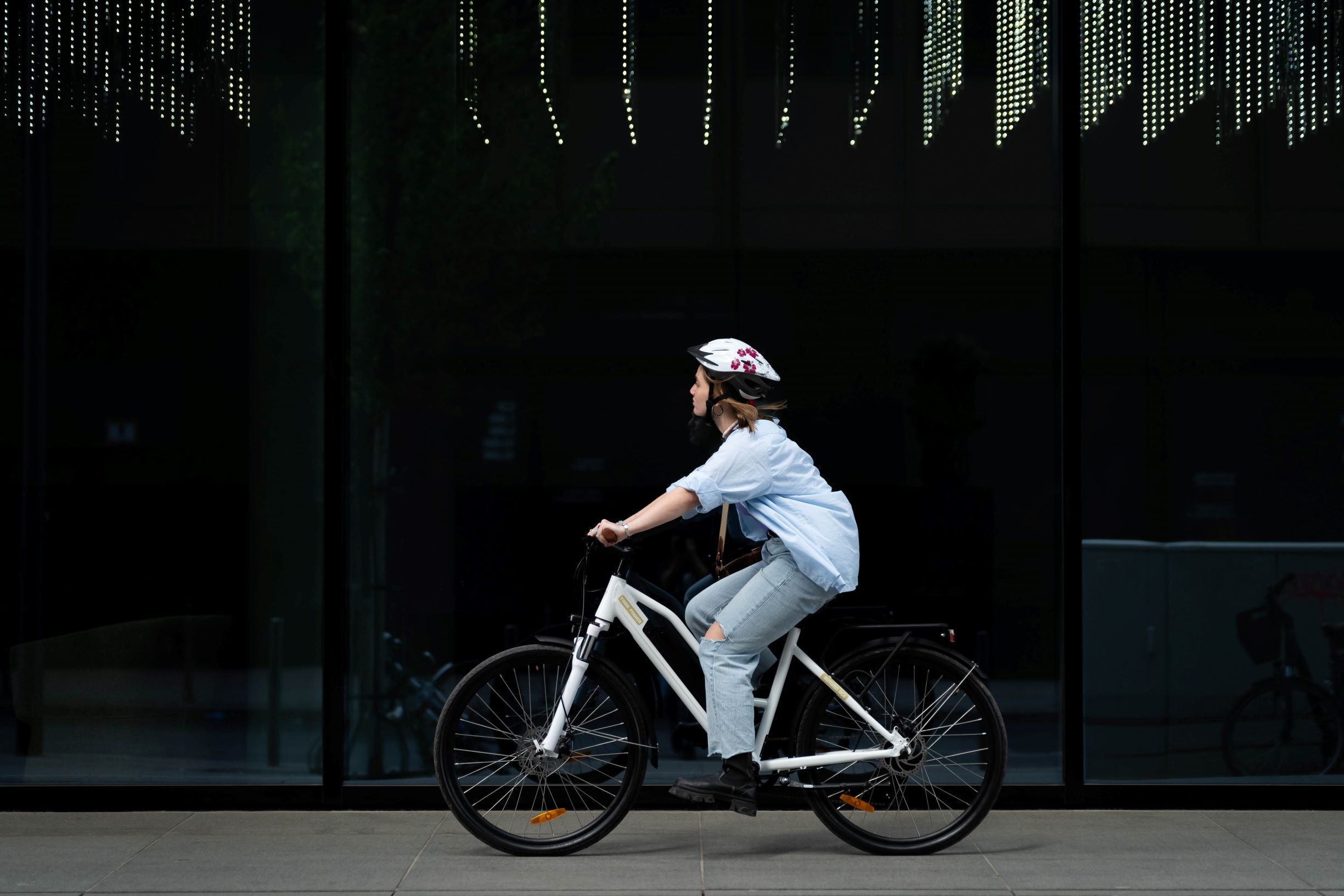You will definitely be thinking about how to properly use an E-bike when you first own it. There are actually many tips for first-time E-bike riders worth noting that will enable you to stay safe and have fun.
5 Things to prepare before riding your E-Bike
Right Clothing - Know your riding route in advance. The gear you need depends on the conditions you encounter on your E-bike, including the distance you ride and the type of terrain. Balancing the comfort and convenience of your gear is an important thing. Choose clothing that is comfortable and appropriate for the climate, making sure you aren't wearing clothing that is too loose to get tangled in your wheels or other moving parts. Reflective gear and lights are needed if you plan to ride at dawn or in the evening. Tough helmets and safety pads are a key component of safe cycling if you're going over rough terrain, whether or not they're mandatory in your area. To make your riding experience more enjoyable, choose a helmet that fits snugly but comfortably. And make sure you wear your helmet correctly, leaving 2 fingers of space between your chin and the helmet's strap, but not so loose that it lacks security.
Seat Height - Adjust the seat height to your personal height or riding preference. Experienced riders usually only expect their toes to touch the ground when they are in the seat. But first-time riders may feel more comfortable if they can place their feet flat on the ground when the bike is stationary. A properly setting up the seat is a great start to your happy riding, which will allow you to ride faster and farther with fewer unnecessary injuries.
Battery Condition - Check the battery level before you ride to make sure it can support you to reach your destination. Don't worry, if the battery dies you don't have to get off and push, just pedal your way on. But if you still want to make your trip as time and energy efficient as possible, it is necessary to check the battery before riding. For more detailed information on E-bike batteries, read A guide to e-bike batteries.
Tire Inflation - The easiest way to check E-bike tire pressure is to just press on them. A tire that you can easily squeeze means that there is very little air in it and it needs to be inflated. It is best to use a pump with a pressure gauge so that the required range set by the manufacturer can be met. Leaky or low pressure tires on an E-bike can affect battery life and motor range because it has to work harder to move the E-bike. Stop riding immediately if the tire is leaking, as this can damage the rim of the wheel.
E-bike Laws - Before setting out, it is necessary to know the local laws and regulations for E-bikes to avoid legal disputes that could affect the mood of the ride. Not all places treat E-bikes the same, and each region may have its own local laws. Here are some questions to help you understand the regulations in your area. Are E-bikes classified as motor vehicles? This can limit where they can be ridden. Do you need any type of liability insurance or a driver's license to ride an E-bike? What are the speed or power limits of E-bike? Is there a mandatory requirement to wear a helmet? Researching these details ahead of time can save you a lot of trouble later.
What should to know about your E-bike before riding?
Weight - First-time riders usually notice that E-bikes are heavier than traditional bikes due to the addition of electronic components such as motors and batteries as well as changes to the frame. If you want to pursue faster speeds, the bicycle body will not be very light. This difference from traditional bicycles requires newcomers to adapt in advance.
Brakes - The right brake is usually used to slow the bike down, while the left brake is used to make an emergency stop. Since E-bikes ride faster than traditional bikes, if a person once stops in a hurry will have more inertia and therefore rush out. Therefore, focus your attention during the ride, observe the road conditions at all times, and slow down the brakes in advance to reduce the occurrence of accidents in case of some unexpected situations. Before you set off, press the brakes to check if they are working and check if there is any mud or dirt on the brake pads as they may affect the way they work.
Gears - Due to the weight of the E-bike itself, it is difficult to switch gears when not riding. That's why riders generally switch gears as they see fit during the ride. Using the right gear is critical in determining the speed bike at which you can pedal at a steady pace or rhythm without being too light or too hard. Riding will become much easier for new riders when they learn to use every feature of the bike correctly.
Is an E-bike difficult to ride?
Paying attention to the following tips will make you feel that riding an E-bike is easy and fun.
Riding Position
During riding, the best position is to remain seated at all times. The reason is that standing up while pedaling may affect the battery supply. As electric bikes have a low center of gravity, anything that breaks this delicate balance requires your motor to work harder. This also adds to less stability and in effect, less control you'll have over the bike. Of course you can stand up and stretch your legs, but this is likely to put a greater energy output on your battery and motor. To ensure that you have a perfect ride, please maintain the safest seated riding position possible.
Power Surges
It may be tempting to immediately accelerate your E-bike to the fastest setting, but we recommend that you start slowly and begin with a low power setting for the first few rides. One difference from a regular bike is that the start of a regular bike depends on how hard you pedal and is completely in control. E-bikes have motors to keep them working and there is a power surge when you first start. Be prepared for this when you start, so that you won't go off too fast. We also recommend that you practice riding your new E-bike in a large open parking lot or on a road where cars are prohibited after you are familiar with it.
Speed
From the outside, an E-bike doesn't look very different from a regular bike, so when you're riding down the road, one might not expect it to be this fast. This means you should be extra careful and more aware of your surroundings when riding.
The greater power, faster speed and heavier frame will require you to start slowing down sooner than on a regular bike. Especially when you encounter special road conditions, such as intersections and downhill, you need to control your speed. As you approach uphill with pedal assistance, you'll notice that you don't have to pedal as hard, just faster. Just make sure you're in the right gear to climb and let Pedal Assist do what it does best - provide a smooth, powerful ride without much effort on your part.
Turning
In most cases, turning on an E-bike is similar to turning on a conventional bike. However, you must remember that E-bikes have a lower center of gravity because the battery and motor are close to the ground. You usually don't notice this difference when turning at low speeds. However, stop pedaling before starting a turn when moving very fast. Also, stand halfway and gently lean the bike into the turn. Once you have completed the turn, simply sit down and start pedaling or use throttle assist.
Want to learn more about Yose Power? Visit our website here. We also have a lot of information about E-bikes. To learn more about E-bikes, found here.


Share:
A guide to e-bike batteries
7 Reasons to DIY an Electric Bike